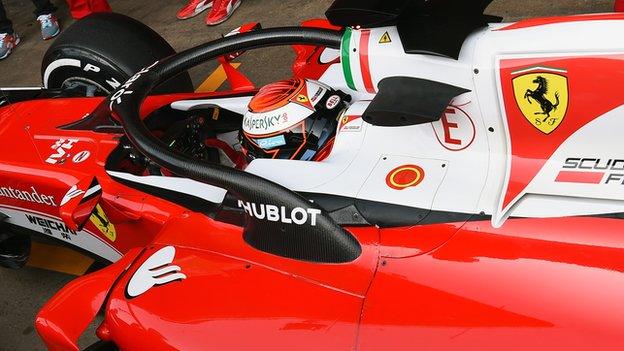Halo: Is F1's new head-protection system an 'overreaction' or essential?
- Published
- comments
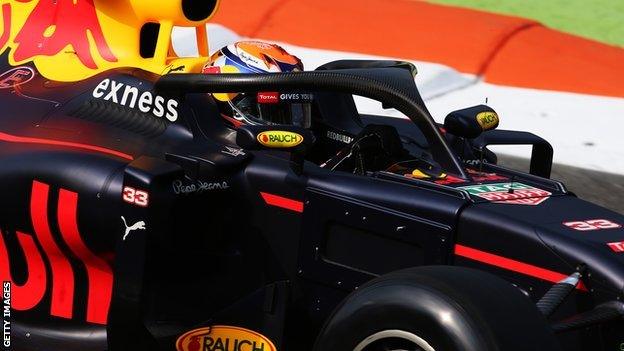
The controversial 'halo' cockpit head-protection system will be introduced into Formula 1 in 2018
Formula 1 is introducing additional cockpit head protection for drivers in 2018 with the 'halo' - and it is fair to say the decision is a long way from universally popular.
Triple world champion Niki Lauda - a man who knows something about risk having survived a fiery accident at the 1976 German Grand Prix - has called it the "wrong" move.
Lauda, now non-executive chairman of world champions Mercedes, told Germany's Auto Motor und Sport the move is an "overreaction" that has "destroyed" the good work F1 has done by introducing faster and more dramatic cars this year.
Other leading figures - including 1996 world champion Damon Hill - have also said they disagree with the decision, and fans seem generally opposed as well. So why has it happened and what effect will it have on F1?
Why has the halo been introduced?
F1's governing body the FIA is constantly striving to improve safety. While driving a racing car at such high speeds can never be safe, it has become clear in the past decade that the driver's exposed head is the last major risk left unaddressed.
The FIA has been striving to come up with a way to reduce the danger without compromising F1's central ethos as an open-cockpit, open-wheel formula.

During the first practice session at the 2016 Belgian Grand Prix, former Mercedes driver Nico Rosberg set his fastest time with the halo device fitted
The halo - a wishbone-shaped device that has two struts arching forward from behind the driver's shoulders and meeting at a central point in front of the cockpit - emerged over several years of research as the best option.
The original plan was to introduce this for 2017 but at a meeting of team bosses and the FIA in July 2016 it was decided that more development work was needed. But additional frontal protection (AFP) was locked into the rules for 2018.
Over the second half of last season, all teams and all but one driver tried the halo in practice sessions at grands prix and the number who said they felt it was not intrusive far outweighed those who disagreed. Mercedes driver Nico Rosberg even set the fastest time of all in the first session at the Belgian Grand Prix while the device was fitted to his car.
Despite that, concerns remained over the halo's aesthetics and in April this year F1's bosses agreed to prioritise a 'shield' - a transparent front screen - for 2018.
A prototype was tested by Ferrari's Sebastian Vettel in practice at the British Grand Prix but he said it made him dizzy.
It was clear that the work needed to make the shield a success would go beyond the start of 2018, so the FIA decided to confirm the halo.
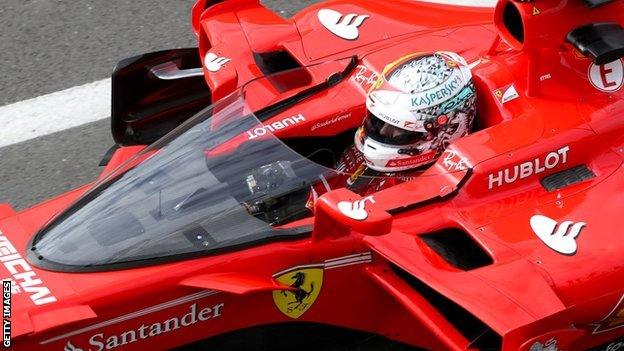
Ferrari driver Sebastian Vettel ran just one lap with the shield device fitted to his car at the British Grand Prix before abandoning it
Is there opposition in F1 to it?
The final decision to introduce the halo was made at a meeting of F1's strategy group on Wednesday. This includes the FIA, the leading teams and the commercial rights holders, the F1 Group. The other teams not on the strategy group - Haas, Renault, Toro Rosso and Sauber - were also at the meeting as observers.
The FIA's decision to introduce the halo was backed by the F1 Group, whose sporting boss Ross Brawn has been working with the FIA on cockpit protection. A spokesman said: "We fully support the FIA on this matter."
With the FIA and F1 in favour, the teams' views are irrelevant - the FIA and F1 Group have enough votes together to get anything through the strategy group.
On top of that, the FIA has the right to bypass normal governance procedures and force the adoption of safety measures. This is effectively what happened, with the F1 Group's backing, through sporting boss Ross Brawn, adding further weight to its stance.
Mercedes F1 boss Toto Wolff has said he "understands" why FIA president Jean Todt has taken the position he has. But there is concern among the teams about the effects halo could have on F1's popularity, whether it will upset the delicate balance of risk, danger, glamour and excitement that define its appeal. But there is now no way back.
As for the drivers, while some have made clear their opposition to extra head protection, many leading drivers are in favour - including Lewis Hamilton, Fernando Alonso, Sebastian Vettel, Kimi Raikkonen, Daniel Ricciardo and Felipe Massa.
And the Grand Prix Drivers' Association as a body has made it clear it is in favour.
A survey by the FIA of drivers' views on the matter over the winter gave a pretty even split for and against but officials had suspicions that some of the drivers had been 'got at' by their teams and there was scepticism as to whether all responses were their own personal views.
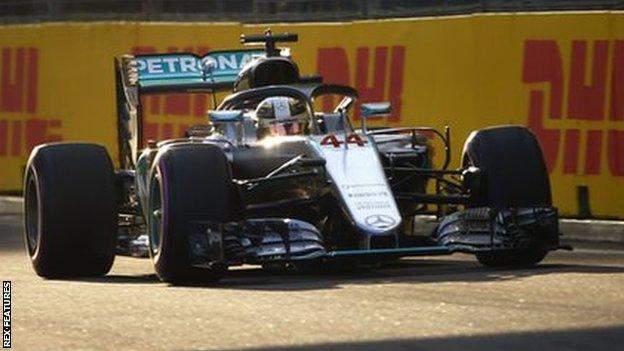
Lewis Hamilton said he had no problem with the halo head-protection system after trying it on track for the first time at the 2016 Singapore Grand Prix
Does the halo improve safety?
The FIA has conducted extensive analysis and risk assessments on the halo and it has proved to be positive in the vast majority of cases.
A number of major incidents were analysed.
Among - but by no means all of - these were: Alexander Wurz's Williams flying over David Coulthard's Red Bull at Melbourne in 2007; Vitantonio Liuzzi's Force India riding up the front of Michael Schumacher's Mercedes at Abu Dhabi in 2010; Romain Grosjean's Lotus crashing over Fernando Alonso's Ferrari in Belgium in 2012; Kimi Raikkonen's Ferrari mounting Alonso's McLaren in Austria in 2015; and the death of the Formula 3000 driver Marco Campos, who landed upside down on a wall in Magny-Cours in 1995.
In all of the incidents in which a large object could have intruded on the cockpit, the effects of the halo were found to be overwhelmingly positive on balance.
There has been concern expressed about whether the halo would make it more difficult for a driver to climb out of an upturned car.
But the FIA did a test with one of its operatives in a car in the same position as Alonso's McLaren ended up after his huge accident in Australia in 2016 and the man - considerably less lithe and fit than an F1 driver - was able to climb out without difficulty.
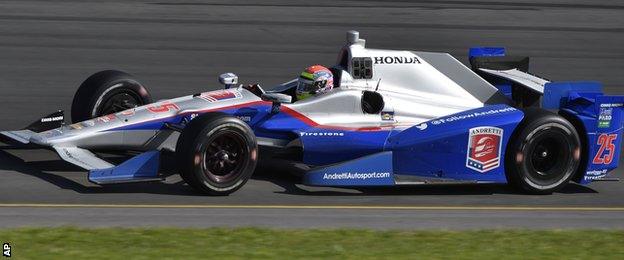
Justin Wilson was Champ Car series runner-up in 2006 and 2007, having driven in F1 in 2003
The FIA also modelled the IndyCar accident in which Justin Wilson was killed by a flying front wing assembly in 2015, and found the halo effect was positive in that, too.
Some have questioned the effectiveness of the halo in deflecting small objects, such as the spring that hit Massa and fractured his skull in Hungary in 2009.
The halo is not designed primarily for this eventuality, but even so in nearly a million tests conducted involving small missiles, the potential danger of these was considerably less with the halo than without. And again the net effect was positive.
As for claims that the halo could potentially deflect small objects towards a driver's body, the risk is low - and in any case these objects may well have hit the driver's head had the halo not been there.
The governing body feels it has addressed all concerns, has a device that is positive or neutral in the vast majority of cases, and that it is incumbent upon it to introduce a proven safety device, against which it believes there are not counter-arguments other than people not liking its looks.
There are also liability issues that could lead to legal problems - if the FIA has a device proven to work, makes an active decision not to use it, and then a driver is killed or injured in exactly the sort of incident it is designed to prevent.
On that basis, the FIA does not see any argument for not introducing it.
What about the aesthetics?
Many of the concerns expressed about the halo are based on its looks - it has been likened to a flip-flop,, external or a chicken wishbone, plonked on the top of the car.
There is no getting away from the fact that it changes the aesthetics of an F1 car. But the halos that are used next year will not look like the stark, black titanium structures seen in testing so far.
Teams can paint them any colour they like, and the rules allow for teams to fit a fairing around the halo, in all places other than the frontal strut, that can extend no more than 30mm on either side of the structure.
This rule was introduced because the halo affects the airflow - both into the engine air intake and the overall aerodynamics.
So teams will inevitably fit shaped bodywork to the halo, which will make it look less out of place.
How have F1 cockpits evolved?
The FIA's view is that, when the arguments for increased safety are so strong, F1 simply has to get on with it.
It feels that by the time the cars have run in pre-season testing, people will have got used to the halo and that - as with many other changes introduced over the years - soon cars will look strange without it.
The argument against introducing it goes something like this:
F1 is pretty safe now, so why risk its popularity for a device that protects against accidents that are already very rare?
The halo would not have saved Jules Bianchi in his crash at Suzuka in 2014, it is said (although no-one is pretending it would). Wheels fly around only occasionally, people argue (although Sergio Perez's Force India lost one in a crash in Baku only last month). The deaths of Wilson and Henry Surtees, external were in other categories which are less safe than F1.
But F1 was also perceived to be doing well on safety in April 1994, when it was eight years since the last fatality and 12 since the last death at a race meeting.
And then came the San Marino Grand Prix, and the deaths of Roland Ratzenberger and Ayrton Senna on consecutive days.
Will the halo affect F1's popularity? That remains to be seen - and GPDA chairman Alexander Wurz argues that F1 has become more popular as it has become safer, which is indisputable, but it is also hard to prove a causative link.
Overall, though, people opposed to the halo might ask themselves a simple question.
If it was not introduced next year and a driver was killed when the halo could have saved him, how would they feel then?
The risk might be small, but are aesthetics and the perceived appeal of something really more important than a driver's life?
- Published19 July 2017
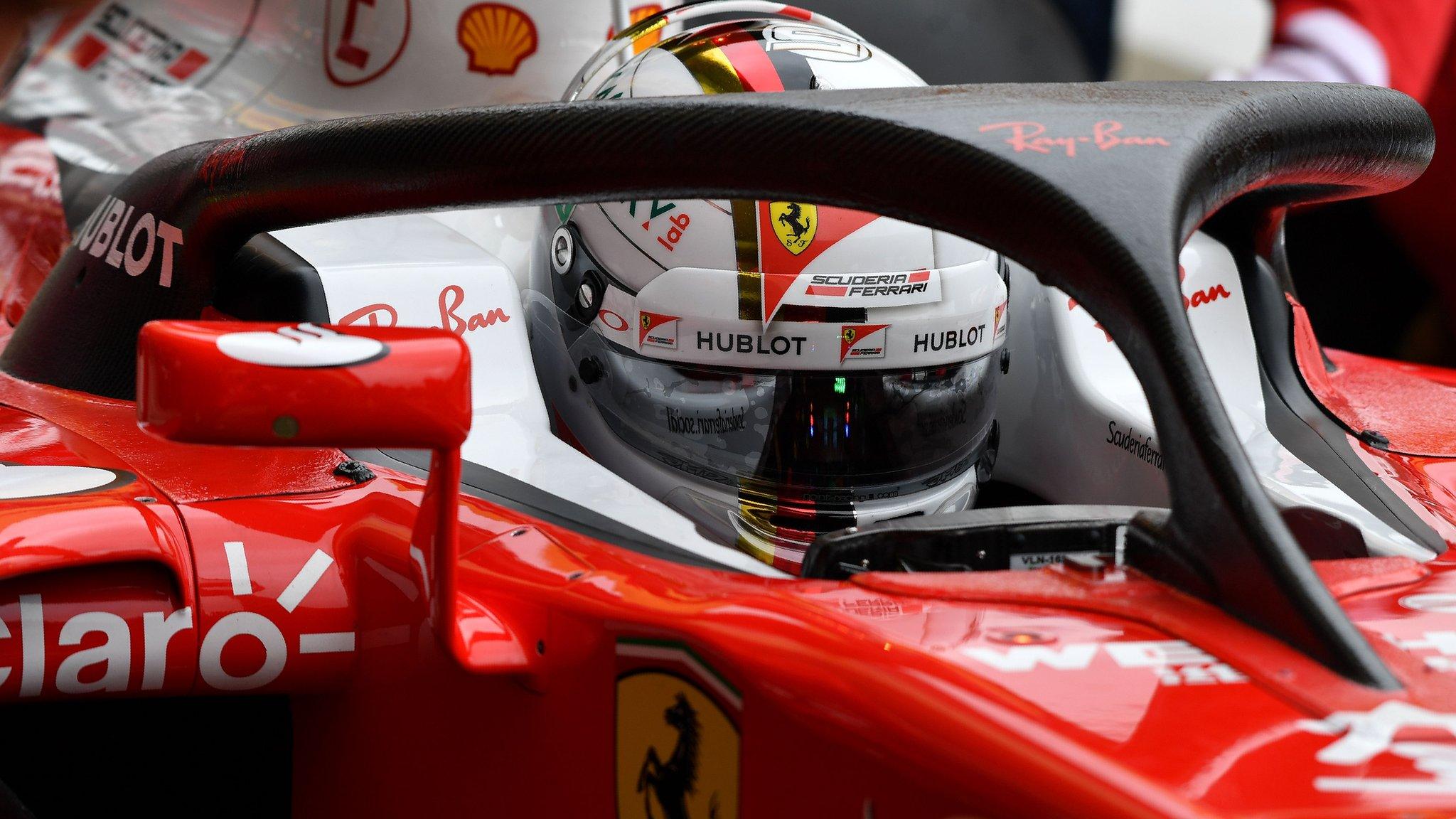
- Published14 July 2017
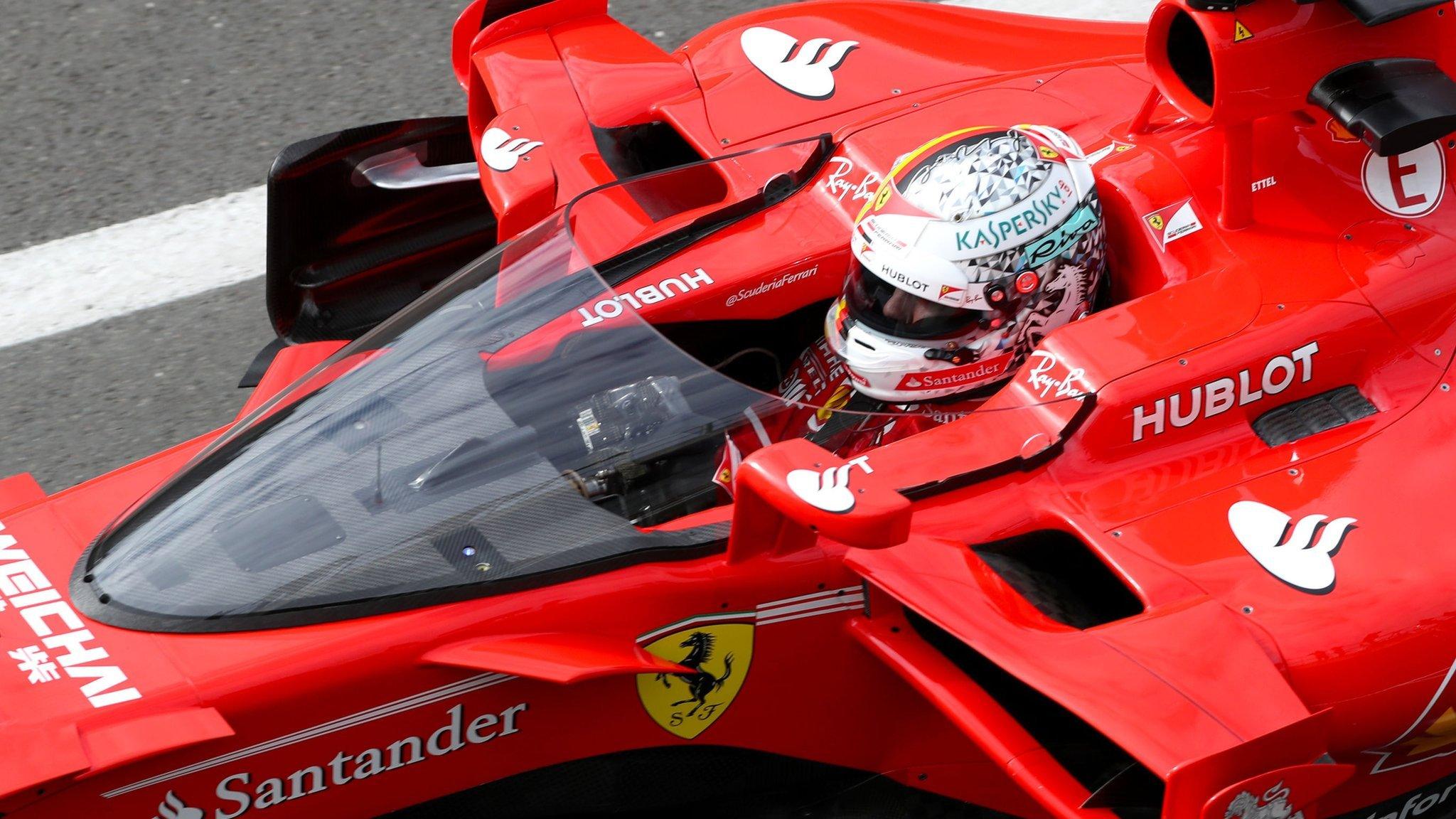
- Published3 March 2016
